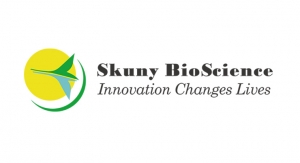Developments in the expanded use of omega 3 fatty acids are being driven by the convergence of four factors-increased understanding of omega 3 benefits, growth in consumers' awareness of their own health deficiencies, developments in formulation technologies and a mostly positive regulatory environment.
The physiological benefit of essential polyunsaturated fatty acids (PUFAs) is said to be that they render cellular membranes supple, and the smooth passage of signals through neuronal membranes is key for several, if not all, brain functions both at the start and throughout life. According to Ocean Nutrition Canada, Dartmouth, Nova Scotia, Canada, a leading supplier of omega 3 fatty acids from fish oil, there are a number of specific benefits of consuming sufficient EPA and DHA.
� Mothers are said to benefit from a reduced risk of post partum depression and mood change, as well as an improved ability to stay healthy during pregnancy, and recover after pregnancy.
� DHA has been found to provide critical insulation for an infant's developing nervous system. It has also been found to support the visual and cognitive development in infants. Indeed, human breast milk is rich in all three fatty acids and most infant formulas now contain DHA along with ARA (arachidonic acid) to more closely mimic breast milk.
� EPA and DHA are also said to reduce the symptoms of dyslexia, ADHD (attention-deficit hyperactivity disorder), and other learning, behavioral and coordination disorders in children. For adults, the benefits could include a reduced risk of depression, aggression schizophrenia, hypertension and inflammatory diseases like rheumatoid arthritis, inflammatory bowel disease (IBD) and asthma, a reduced risk of strokes, heart attacks and other cardiovascular diseases. Benefits to seniors include a reduced risk of Alzheimer's disease, dementia, other conditions of mental deterioration, and possibly age-related macular degeneration (AMD).
This wide variety of benefits is based on recent studies that have to date mostly focused on health conditions such as inflammation-based disorders (including arthritis, autoimmune disease, psoriasis and eczema), depression, cancer, lupus and asthma. However, additional research on omega 3's is currently underway for a variety of other conditions, ranging from sleep disorders and anxiety to depression and impaired immune response.
Under the direction of Gregory Cole, the Alzheimer's Disease Research Center at the University of California at Los Angeles (UCLA) is preparing to test whether omega 3 fatty acids can deter Alzheimer's disease, the number one cause of cognitive decline. So far, these essential fats have successfully fended off dementia in lab rats.
The good news is, the attitude-behavior gap related to the consumption of healthy food and drinks is slowly diminishing as people realize the financial and physical impact of poor health. Indeed, sustainable nutrition habits both in terms of weight maintenance and providing sufficient nutrients to one's body are essential to the very longevity and youthful appearance consumers seem to crave.
However, one reason for the attitude and behavior divide is consumer desire for instant gratification. At present, Datamonitor consumer surveys have shown that long-term health concerns are of importance to consumers, but at the same time, they tend to choose products that offer more immediate benefit.
A recent Datamonitor survey of over 1000 consumers found that the generic concept of "long-term health maintenance" drove functional product purchases to a "very high" or "high" degree for 66% of consumers. However, when asked about their specific concerns, oral and teeth health, low energy levels and gut health were of concern to 62%, 56% and 47% of consumers, respectively, while the longer-term health issues of depression or poor mood, hearth health and bone health were of concern to just 45%, 41% and 20% of consumers, respectively.
This first set of immediate health concerns were also the ones that consumers felt were best addressed by functional food, beverage and supplement products, and probably as a result, are the major specific concerns that seem to drive product purchasing. Indeed, an unambiguous conclusion of the overall survey was that consumers find it difficult to maintain compliance in a given routine when there are no immediate benefits to be seen, with only heavily qualified statements about possible future benefits to keep them on track.
In terms of omega 3's specifically, recent studies have shown that up to 25% of Americans do not eat fish at all, and even fish lovers find it hard to maintain a consistent diet including two meals of oily fish every week as recommended by the American Heart Association (AHA) and the United States Department of Agriculture (USDA). However, a Datamonitor survey of 195 functional food manufacturers and suppliers conducted in August 2005 found 81% of respondents felt that consumers are aware of omega 3 fatty acids and 77% of respondents felt that the highlighted presence of omega 3 fatty acids continues to drive product purchasing. As such, as long as manufacturers continue to promote the short-term benefits of omega 3, as well as the long-term ones, consumer demand will remain high.
Omega 3's are notoriously difficult to work with because they are highly unstable; if oxidation occurs, the food product can be tainted with a fishy taste and smell-even if you are working with an omega 3 ingredient, which contains vegetarian or microalgae-derived oil in place of fish oil.
By encasing omega 3's in a dry powder-that is, microencapsulation-oxidation is prevented, thereby increasing shelf life. This has been the area in which Ocean Nutrition Canada (ONC) has excelled in recent years.
ONC's technical advances have paved the way for its omega 3 ingredients to be used in several new product introductions over the last year. Some of these introductions include breads, milk, yogurts and soft chews. Coupled with a brand licensing campaign to promote ONC's fish oil-based omega 3's, rapid double-digit growth seems inevitable for the company in the years ahead.
Most recently, Danone Canada Inc. signed a trademark license agreement enabling the company to include ONC's MEG-3 brand of omega 3's in marketing its new yogurt products to consumers. This past January, Danone launched Cardivia, which contains 300 mg of omega 3 fatty acids per container.
According to ONC, the MEG-3 brand has now been licensed to 15 branded products in the healthy food and dietary supplement markets. Canadian healthy food co-branding partnerships include Danone Cardivia yogurt, Farmers Choice Milk Beverage, Cali-Wraps with MEG-3 tortillas and Sunkist brand Omega-3 Citrus Soft Chews.
Australia-based Nu-Mega has been successful in getting its Nu-Mega omega 3's in various foods on the Australian market. It too uses a microencapsulation technology to convert its HiDHA tuna oil into a stable dry powder form called Driphorm. However, the company may be considering an alternative to its fish-sourced omega 3's by turning to a vegetarian source, perhaps microalgae.
Neptune Technologies & Bioressources, Laval, Quebec, Canada, has also been active on the omega 3 front. It uses krill as its non-fish source of omega 3 fatty acids. In December, the company formed an alliance with Degussa AG to further R&D and business development for its krill-derived products. This partnership includes a two-tier project with a common goal to expand Neptune's pipeline. With Degussa AG's expertise in supercritical C02 extraction, Neptune will complete the enhancement of its Neptune Krill Oil properties, customized for different functional foods. Concurrently, Degussa AG and Neptune will join forces to exploit Neptune's proprietary phospholipids, specifically three unique phospholipids: phosphatidylcholine (PC), phosphatidylethanolamine (PE) and phosphatidylinositol (PI). These are recognized as novel, according to Neptune, because they are the only phospholipid carriers of EPA and DHA.
In 2005, Pronova Biocare, Oslo, Norway, introduced Omacor in Europe, also as a prescription drug, with 90% EPA ethyl ester as the active. Later in the year, Reliant Pharmaceuticals, Liberty Corner, NJ, introduced Omacor into the U.S. market as a drug targeted toward high triglyceride patients. According to Reliant, this is the first and only FDA-approved prescription omega 3 fatty acid product proven to reduce high triglyceride levels. The company says this is also the first new class of treatment for very high triglyceride levels in more than seven years.
The ethyl ester forms of EPA and DHA by definition have been considered drugs in Japan, unlike the U.S. where the esterified fish oils have been marketed as dietary supplements for many years. In early November last year, Takeda Pharmaceutical Company Limited, Osaka, Japan, and Pronova entered into a license and supply agreement for Omacor, to position it as a pharmaceutical product for the treatment of hypertriglyceridemia. Under the agreement, Pronova granted Takeda exclusive development, marketing and distribution rights in Japan. Takeda will pay Pronova an up-front amount, development milestones and royalties once the product is launched.
There has also been a 98% EPA ethyl ester prescription drug product ("EPADEL" from Mochida Pharmaceutical) on the market in Japan since 1990 for reducing high triglyceride levels. In fact, a Mochida representative presented data at the November 2005 American Heart Association meeting in Dallas showing that a combination of its "EPADEL" drug with a popular statin drug provided additional heart-related health benefits beyond those achieved by statin drugs alone. This favorable result, according to Ron Bailey, author of this month's Japan Insider column (page 28) was not widely reported in the popular press, however, for reasons that are not yet clear.
A recent newcomer to the omega 3 market is Lonza, Basel, Switzerland. In late December 2005, it acquired the DHA business from Nutrinova, a subsidiary of Celanese, Dallas, TX. According to Lonza, the acquisition includes know-how, patents and registrations in the major global markets that apply to this vegetarian source DHA. Lonza views the acquisition as synergistic with its current L-carnitine and niacin franchises.
Martek, Columbia, MD, has been a major force in the omega 3 category for the last several years, and it is looking to further strengthen its grip on this market in the future. Indeed it has already teamed up with several companies to exploit the many health areas in which DHA has benefit-it considers DHA a "lifetime product."
Its most recent agreement was forgedwith Mission Pharmacal, San Antonio, TX, to supply DHA for a new prescription product called Citrical Prenatal + DHA. This follows on the heels of a similar introduction by First Horizon Pharmaceutical, Alpharetta, GA, last year called OptiNate, which combines iron, folic acid (as Metafolin) and Martek's DHA.
Last year also marked the introduction of Oh Mama! nutrition bars containing Martek DHA from Vincent Foods, Baltimore, MD. This product targets pregnant and nursing women and supplies 100 mg of DHA per bar.
As for infant formula, Martek continues to lead the market in the U.S. Worldwide, it continues to hold a 25% share. Most recently the company signed a new infant formula customer, Medici Medical, in Israel.
But perhaps the most anticipated product launches will result from an agreement forged with Kellogg's in February 2005. The products to be fortified with DHA are scheduled to be released later this year bearing Martek's DHA seal.
"Supportive but not conclusive research shows that consumption of EPA and DHA omega-3 fatty acids may reduce the risk of coronary heart disease. One serving of [name of food] provides [x] grams of EPA and DHA omega-3 fatty acids. [See nutrition information for total fat, saturated fat and cholesterol content]."
In March 2005, the FDA expanded the number of food categories in which omega 3 fatty acid rich menhaden oil may be used from 14 to 29. Menhaden is a herring-like fish that is not utilized as seafood, but is abundant along the U.S. Gulf of Mexico and Atlantic Coasts. Menhaden is a surface-feeding fish that has a short lifespan and may not have the same environmental contamination worries as longer-living, deep water fish. Hence, removing the worries about toxic substances sometimes found in fish.
Given the volume of credible research amassing in this area, it is generally believed that it will only be a matter of time before this qualified claim becomes unqualified and loses its current disclaimer. It is also believed that other claims regarding the myriad other health benefits will begin to surface as the research continues and the evidence becomes more solid.
According to Datamonitor's Productscan Online database of new products, the list of foods that claim to be fortified with heart-healthy omega 3 fatty acids continues to grow.
Some of the recent introductions include frozen waffles, salad croutons, bread, chocolate bars, eggs and pasta. With regard to the latter, Barilla America debuted Barilla Plus Enriched Multi-Grain pasta in 2005. The product is said to be rich in heart-healthy omega 3's. Van's All Natural Premium Frozen Waffles in a Flax variety broke new ground last year by offering a whopping 1600 mg of omega 3 fatty acids per serving.
Candy and good health are no longer mutually exclusive thanks to Ecco Bella Botanicals' new Ecco Bella Health by Chocolate Women's Wonder Bar. The bar contains a blend of omega 3, 6 and 9 fatty acids derived from cranberry seed oil. Consumers who want omega 3's, but just don't want them from fish, can also turn to Gold Circle Farms DHA Omega 3 Liquid Eggs, which are made from vegetarian-fed hens.
In 2005, Coca-Cola's Odwalla subsidiary rolled out both a "Nourishing Food Bar" and a "Nutritional Fruit Juice Drink" under the name "Berries GoMega" specifically targeted at those looking for omega 3 benefits. The health beverage claims to have 100% of the daily value of ALA from ground flaxseed in every bottle (1.3g).
For those looking for another vegetarian source of omega 3, Life Choices Natural Foods Corp. has launched Chicken Nuggets and Chicken Strips Cutlettes with "multigrain coating," and again are said to be a good source of omega 3 from flax.
Omega 3 fatty acids are also finding their way into beverages. Georgetown, Canada-based Neilson Dairy introduced Neilson Dairy Oh! 1% Milk in 2005. The milk is produced from cows that are fed a unique diet containing the omega 3 fatty acid DHA.



























